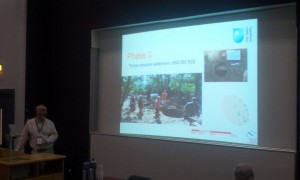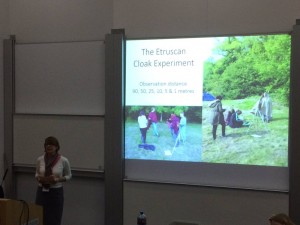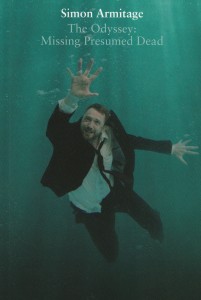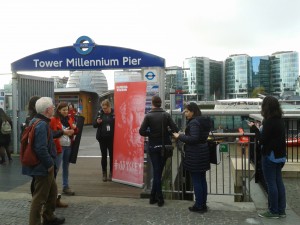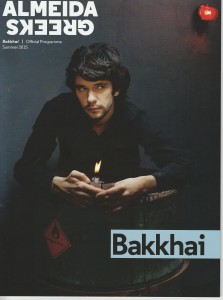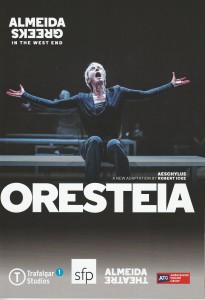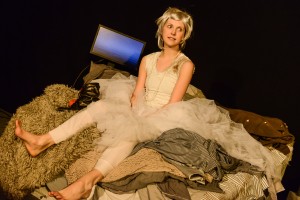On the 6th October 2018, several members of the department, current and former PhD students, and a handful of MA Classical Studies students attended a conference hosted by the Roman Society at Senate House in London. The theme for the day was Sensory Experience in Rome’s Northern Provinces and here, fresh from submitting their dissertations for A864, OU Classical Studies MA students Colin Gough and Kirstie Morey share their multisensory impressions of the day.
Colin Gough
The one question that unites students, academics and anyone interested in Classical Studies is ‘what was it like in classical times?’ At the Senate House conference last Saturday we had the opportunity to experience some of the sensations of a Roman. What does the Roman ketchup that is garum, made from putrefying fish, smell like? To this modern, westernised nose – not pleasant, and it would have taken real courage to use it as an edible additive. Yet it was so popular in Roman times that there was mass production. Did Roman men wear perfume? Thomas Derrick (Leicester) not only gave a presentation on the multisensory approach to the impact of Roman settlements in the north but, during lunch demonstrated his (real) passion for Roman scents and perfumes. There is nothing like pouring olive oils with rosemary and pepper, scaping off the excess with a strigil to get the authentic Roman post-bathing experience, even though I spent the rest of the afternoon smelling like focaccia. Patty Baker (Kent) not only gave an interesting presentation on archaeological data to explore retrieving indigenous conceptions of flora but introduced the concept of experimental archaeology in recreating floral crowns from mosaic images in Britannia. These were passed around to give the sensory feel of manufacture and wearing resulting in some new profile pictures on social media. We were treated to a fabulous talk by the author Caroline Lawrence who, with a range of ‘props’ not only gave an insight into how she uses the sensorium to develop her books but gave us a hands-on experience of some of the sights, sounds, smells and feels of the Roman world.
https://twitter.com/bigfridge224/status/1048530332868329472
This brings me onto an important point, the value to Classical Studies of experientialism, that is, personally experiencing a location, environment or object. Naturally, our experiences will not be the same as an individual or group in classical times but it does give an opportunity to consider sociological changes and responses and, indeed, help formulate questions to be addressed. But it goes further. It opened my understanding of the different applications of Classical Studies. This was underpinned by the excellent talk by Mike Bishop. Twitter users may know him as @perlineamvalli. He has walked the length of Hadrian’s Wall over fifteen times and has produced two-minute soundtracks at each milecastle prompting the discussion of how the soundscape has changed (Editor’s note: you can listen to them here!). This approach not only focusses the mind on the establishing a temporal frame but allows reconstruction of a likely soundscape in Roman times. Nicky Garland (Newcastle) suggested physiological responses not available from empirical evidence that can be gained by a personally experienced, multisensory approach to the partially re-constructed Commanding Officers House at South Shields. Sophie Jackson (MOLA) gave an interesting presentation on the modern history of the Bloomberg Mithraeum and how consultants, design teams and scholars approached interpreting the archaeology to translate the atmosphere and ritual into a sensory experience for the 21st Century audience.
Unfortunately, because of space constraints, I have not named all the presenters or the subjects tackled (for more see Caroline’s own blog). However, to finish, I have two abiding memories. The enthusiasm of all who presented and the generosity they have in sharing their experience and knowledge. Using our imagination, new methodologies can be developed giving a greater insight into the past and engaging students of the future and the wider public. It has never been a better time to study classical times and sensory studies can be at the centre of all disciplines. Along with OU postgrad and WiP days, I think everyone should experience conferences – if nothing else it makes you appreciate how good we all are and how approachable and helpful other people can be.
Application of archaeology theory here at #SERNP2018 pic.twitter.com/H2mqAys9t9
— Adam Parker 🤟🤖 is in need of biscuits. (@adamarchaeology) October 6, 2018
Kirstie Morey
As an A864 OU Master’s student, October 1st was a significant date for me. The culmination of two years of hard work and my dissertation was finally submitted. But I had mixed feelings: I was extremely proud of both what I had written, and of how far I had come. I was incredibly relieved to know that it was in and that I had managed to finish it on time and within word limits. But, I was also very sad. Studying for my Masters had been such a journey and had become such a big part of my life, I simply didn’t want it to end. So, I booked myself onto a Roman Society workshop that I’d had my eye on since reading about it on Twitter, and on Saturday last, ventured to the Senate House for the Sensory Experience in Rome’s Northern Provinces workshop. I was nervous at first as I didn’t think I’d know anybody and I wasn’t sure how ‘interactive’ I would be expected to be at a workshop. But, a couple of familiar faces appeared in the room and we were off. It was great.
@TJ_Derrick giving us an overview of theories relating to senses in classics and archaeology to start the conference #SERNP2018 pic.twitter.com/chr7YnTGJM
— Dr Anna Walas 🇵🇱 (@DrAnnaWalas) October 6, 2018
Having been introduced to the idea of sensory studies in A864, the concepts were easy enough to follow. And the speakers were very engaging and interesting. Some papers were quite theoretical, like Thomas Derrick (Leicester) and Andrew Gardner (UCL); and some were very much more practical. We wore, felt and smelled our way through various coronas, courtesy of Patty Baker (Kent) and heard our way through the milecastles along Hadrian’s Wall, thanks to Mike Bishop. We oiled and ‘strigilled’ ourselves during lunch with ‘authentic’ Roman perfumes and we chewed on mastic chewing gum.
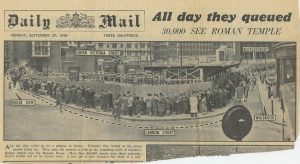 The highlights for me were Stuart McKie’s (Durham) talk on curse tablets and the connection between them and votive offerings and author Caroline Lawrence’s explanation of how she tries to evoke every sensual experience for the readers of her Roman Mysteries series of children’s books. I wish she had been available for my kids’ birthday parties – she was brilliant! While Sophie Jackson from MOLA was talking about the history of the London Mithraeum, she showed us a newspaper photograph showing the thousands of people who queued daily in the 1950s to see the original ruins. A lady in the audience shared with us her memories of being in that queue and how it inspired her to become an archaeologist. That was the icing on the cake.
The highlights for me were Stuart McKie’s (Durham) talk on curse tablets and the connection between them and votive offerings and author Caroline Lawrence’s explanation of how she tries to evoke every sensual experience for the readers of her Roman Mysteries series of children’s books. I wish she had been available for my kids’ birthday parties – she was brilliant! While Sophie Jackson from MOLA was talking about the history of the London Mithraeum, she showed us a newspaper photograph showing the thousands of people who queued daily in the 1950s to see the original ruins. A lady in the audience shared with us her memories of being in that queue and how it inspired her to become an archaeologist. That was the icing on the cake.
I am told that this conference may not have been typical and that others aren’t usually so ‘touchy feely’ but, while that may have been the case, the fact that the theme was so interesting, and the speakers were so engaging was secondary to my enjoyment of just being there. It made me realise that my academic journey is not over and that there is plenty more to be involved with, to listen to and, maybe even one day, to contribute to.
By Colin Gough (@saddad52) and Kirstie Morey (@K33Morey)
